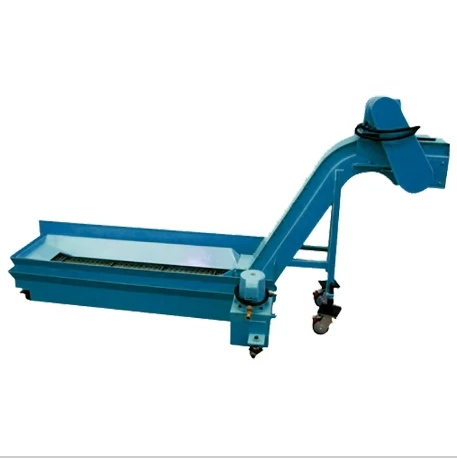chip conveyor
Enhancing Efficiency with Chip Conveyor Systems
In the realm of manufacturing and machining, efficiency and precision are paramount. One crucial component that enhances both these aspects is the chip conveyor system. These systems are designed to transport metal chips and scrap generated during machining processes to a designated area for disposal or recycling, thereby ensuring a cleaner and more organized workspace.
Chip conveyors play a significant role in various industrial settings, particularly in machine shops that utilize CNC (Computer Numerical Control) machines. During the machining process, materials such as metal, plastic, and composites are cut, milled, or drilled, generating a substantial amount of waste material in the form of chips. If left unattended, these chips can accumulate, leading to potential hazards such as slips and falls, as well as creating inefficiencies in the workflow. This is where chip conveyors come into play.
The primary function of a chip conveyor is to automatically remove these chips from the vicinity of the machine tool, allowing for continuous operation without interruptions
. By minimizing manual handling of waste, these systems enable operators to focus more on the machining process rather than on clean-up tasks. This not only increases productivity but also prolongs the life of the machines by preventing chip buildup that can lead to overheating and mechanical problems.There are several types of chip conveyors, each tailored to different machining processes and materials. The most common types include hinged belt conveyors, paddle chain conveyors, magnetic conveyors, and screw conveyors. Each type has its unique advantages and is selected based on factors such as the type of material being machined, the volume of chips generated, and the specific layout of the workspace.
chip conveyor

Hinged belt conveyors, for example, are highly versatile and can effectively handle a variety of chip shapes and sizes. They feature a series of linked metal plates that transport the chips away from the machine. Paddle chain conveyors, on the other hand, use a chain with attached paddles to move chips and are particularly useful for handling larger chips.
Magnetic conveyors are ideal for ferrous materials, as they utilize magnetic forces to lift and move metal chips away from the machine. This is particularly beneficial in environments where traditional conveyors may struggle with fine or small chip sizes. Lastly, screw conveyors use a rotating helical screw to move chips along a trough, making them efficient for conveying medium to fine chips or even sludge-like materials.
The incorporation of chip conveyors also contributes to sustainability efforts in manufacturing. By streamlining the waste removal process, manufacturers can easily collect metal chips for recycling, leading to reduced waste and increased resource efficiency. This not only benefits the environment but can also result in cost savings for businesses, as recycled materials can be reintegrated into production processes.
In addition to their operational advantages, modern chip conveyor systems are increasingly equipped with advanced technologies. Integration with sensors and automation allows for real-time monitoring of chip levels and equipment health, enabling predictive maintenance and minimizing downtime. Manufacturers can also leverage data analytics to enhance their processes further, optimizing chip removal schedules and improving overall operational efficiency.
In conclusion, chip conveyor systems are a vital component in the efficiency of manufacturing and machining processes. By automating the removal of metal chips and scrap, these systems not only enhance workplace safety but also promote productivity and sustainability. As technology continues to advance, the potential for chip conveyors to transform industrial operations further will only grow, making them an indispensable asset in modern manufacturing environments. Adopting these systems is not merely a choice between convenience and efficiency; it is a necessary evolution towards a more effective and responsible future in industrial processes.








